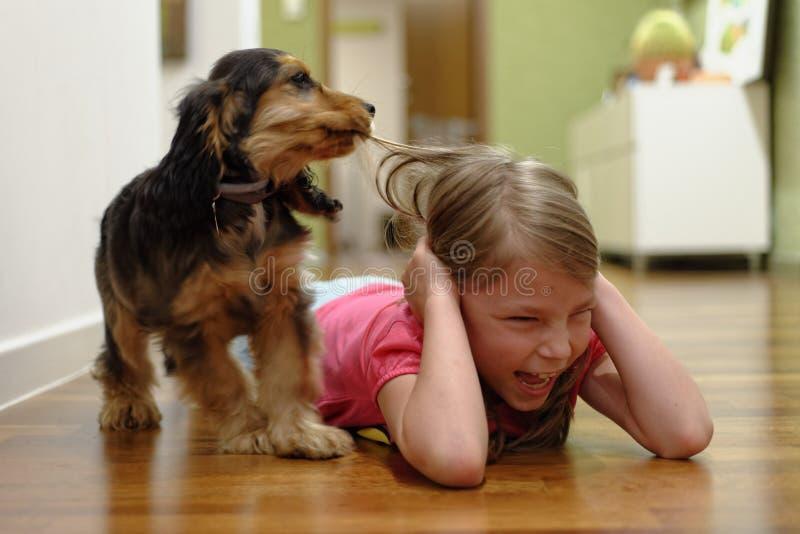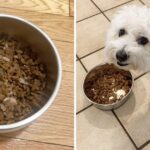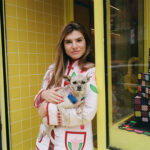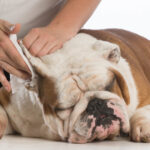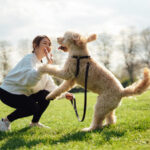Every pet owner knows the joy of having a furry friend by their side, but when that beloved companion starts pulling out their own fur, it can be a cause for concern. Whether it’s due to stress, allergies, or skin conditions, excessive grooming can lead to discomfort and health issues for your dog.
In this article, we’ll explore effective strategies to help stop this behavior and promote a healthier coat for your canine companion. With a little understanding and the right approach, you can help your dog feel their best, ensuring they’re happy, healthy, and ready to show off their beautiful fur. Let’s dive into some friendly tips that can make a world of difference for you and your four-legged friend!
Table of Contents
- Understanding the Behavior Behind Hair Pulling in Dogs
- Creating a Calm Environment to Reduce Stress and Anxiety
- Implementing a Balanced Diet for Healthy Skin and Fur
- Establishing a Consistent Grooming Routine for Optimal Coat Care
- Q&A
- In Retrospect
Understanding the Behavior Behind Hair Pulling in Dogs
Understanding why dogs pull their hair out can be crucial in addressing the behavior effectively. Often, this issue stems from a combination of factors, including stress, boredom, and underlying medical conditions. Dogs may resort to hair pulling as a coping mechanism for anxiety or when left alone for extended periods. In some cases, this behavior can also indicate allergies, skin irritations, or parasites that make them uncomfortable. Identifying the root cause is essential to provide the appropriate treatment and ultimately reduce the urge to pull fur.
To tackle this issue, you might consider implementing a variety of strategies that focus on both mental and physical wellbeing. Here are some practical tips:
- Increase Exercise: Regular walks and active play can help alleviate boredom and excess energy.
- Enrichment Activities: Interactive toys or puzzle feeders can stimulate your dog’s mind and keep them engaged.
- Seek Veterinary Advice: A vet can check for any underlying health issues that might be causing discomfort.
- Training and Socialization: Teaching new commands and allowing your dog to socialize with other pets can help reduce anxiety.
Additionally, it can be beneficial to keep track of your dog’s behavior and any triggers that lead to hair pulling. A simple table can help you monitor patterns:
| Trigger | Behavior Observed | Action Taken |
|---|---|---|
| Alone Time | Increased pulling | Interactive toys provided |
| Change in Environment | Stress and anxiety | Calming aids used |
| Allergy Symptoms | Scratching and pulling | Vet consultation for treatment |
Creating a Calm Environment to Reduce Stress and Anxiety
Creating a serene atmosphere for your dog can significantly impact its overall well-being and help curb behaviors like excessive fur pulling. Start by establishing a designated calm zone in your home, equipped with cozy bedding and familiar toys. This space should be free from loud noises and distractions, allowing your pet to retreat whenever it feels anxious. Incorporate soothing elements, such as soft lighting or gentle background music, to enhance relaxation. Additionally, consider using calming scents like lavender or chamomile, which can help alleviate stress for both you and your canine companion.
Engaging in regular relaxation practices can further support your dog’s emotional health. Activities such as gentle massage or slow-paced walks in nature can create a bonding experience while promoting tranquility. Aim to set a consistent routine that includes ample playtime and quiet moments, fostering a sense of security. You might also explore products specifically designed for anxiety relief, like anxiety wraps or calming chews. Here’s a simple table to summarize effective strategies:
| Strategy | Description |
|---|---|
| Calm Zone | A quiet, comfortable space for your dog. |
| Soothing Scents | Use essential oils like lavender for relaxation. |
| Massage | Gentle touch to alleviate tension and promote bonding. |
| Routine | Consistency in daily activities to create a sense of security. |
Implementing a Balanced Diet for Healthy Skin and Fur
- Omega-3 Fatty Acids: Found in fish oils and flaxseed, these essential fats help maintain skin moisture and reduce inflammation.
- Vitamins: Vitamins A, E, and C are vital for skin health, promoting regeneration and protecting against environmental damage.
- High-Quality Protein: Proteins support hair structure, with sources like lean meats and fish ensuring your dog gets the necessary amino acids.
- Antioxidants: Foods rich in antioxidants, such as sweet potatoes and blueberries, can help fight free radicals that damage skin cells.
In addition to these nutrients, ensuring a proper balance of hydration is essential. Dogs need fresh water daily to keep their skin hydrated and fur looking shiny. To visualize the key components for a balanced diet, refer to the table below:
| Nutrition Component | Sources | Benefits |
|---|---|---|
| Omega-3 Fatty Acids | Fish oil, flaxseed | Moisturizes skin, reduces inflammation |
| Vitamins A, E, C | Carrots, spinach, citrus fruits | Skin regeneration, protection |
| High-Quality Protein | Chicken, turkey, fish | Supports fur growth and health |
| Antioxidants | Sweet potatoes, blueberries | Fight free radicals, enhance skin health |
Establishing a Consistent Grooming Routine for Optimal Coat Care
To ensure your dog maintains a healthy and vibrant coat, establishing a grooming routine is essential. Regular grooming not only keeps your dog’s fur looking good, but it also helps detect skin issues early. Aim for a schedule that suits your dog’s specific coat type, whether it’s short and smooth or long and flowing. Here are some key components to include in your grooming routine:
Brushing: Use the right brush for your dog’s fur type. For example, slicker brushes work well for long-haired breeds, while rubber curry brushes are great for short-haired ones.
Bathing: Bathe your dog every 4 to 6 weeks, using a gentle, dog-specific shampoo to keep their skin hydrated.
Trimming: Regularly trim areas where mats can form, such as behind the ears and between the toes, to prevent discomfort and skin irritation.
Nail Clipping: Keep your dog’s nails short to prevent snagging and discomfort. Ensure you have a good pair of dog nail clippers.
Moreover, consistent grooming provides an excellent opportunity for bonding and helps you examine your dog’s skin for signs of irritation or parasites. Consider making grooming a fun activity by rewarding your dog with treats or praise after each session. You can track your grooming schedule effectively by using a simple chart:
| Grooming Task | Frequency |
|---|---|
| Brushing | 2-3 times a week |
| Bathing | Every 4-6 weeks |
| Trimming | As needed |
| Nail Clipping | Every 2-4 weeks |
Q&A
Q&A: How To Stop A Dog From Pulling Its Hair Out – Tips for Healthy Fur
Q1: Why is my dog pulling its fur out?
A: There can be several reasons why a dog pulls its fur out, including anxiety, boredom, allergies, or skin irritations. Sometimes, it may be related to a condition called “psychogenic alopecia,” where dogs chew or pull at their fur due to stress or anxiety. It’s essential to observe any accompanying signs, such as changes in behavior or skin problems, and consult with a veterinarian for a proper diagnosis.
Q2: How can I tell if my dog is pulling its fur out due to anxiety?
A: Signs of anxiety in dogs may include excessive barking, pacing, hiding, or destructive behavior. If your dog is pulling out its fur more during certain situations, like when you’re leaving the house, it could be a sign of separation anxiety. Monitoring your dog’s behavior and noting any stress triggers can help you identify if anxiety is the root cause.
Q3: What steps can I take to manage my dog’s anxiety?
A: To help reduce anxiety, you can create a safe and comforting environment for your dog. Providing interactive toys, regular exercise, and establishing a consistent routine can help alleviate stress. Additionally, consider using calming products, such as anxiety wraps or pheromone diffusers, and consult a professional dog trainer or behaviorist for tailored strategies.
Q4: Are there specific diets or supplements that can promote healthy skin and coat?
A: Yes! A well-balanced diet rich in omega fatty acids, vitamins, and minerals is crucial for healthy fur. Look for dog food that lists high-quality protein sources and includes omega-3 and omega-6 fatty acids, which support skin health. Supplements like fish oil or flaxseed oil can also be beneficial. Always consult your vet before adding supplements to your dog’s diet.
Q5: How often should I groom my dog to prevent fur pulling?
A: Regular grooming is essential to keep your dog’s coat healthy and to remove loose hair that may contribute to pulling. Depending on your dog’s breed and coat type, grooming can be done anywhere from once a week to several times a week. Regular brushing helps prevent matting and gives you a chance to check for any skin issues or irritations.
Q6: Are there any behavioral training techniques I can use to discourage fur pulling?
A: Yes! Positive reinforcement is effective for discouraging unwanted behaviors. If you catch your dog pulling its fur, redirect its attention to an engaging toy or activity and reward them for playing with it instead. Consistency is key, so make sure all family members use the same approach. Consider teaching “leave it” or “no” commands to help guide your dog away from pulling.
Q7: When should I consult a veterinarian about my dog’s fur pulling?
A: If your dog’s fur pulling is frequent, severe, or accompanied by other symptoms such as skin lesions, itching, or behavioral changes, it’s important to consult a veterinarian. They can perform a thorough examination and rule out any underlying medical conditions, allergies, or infections that might be causing the behavior. Early intervention can lead to a more effective treatment plan.
Q8: Can I use calming aids to help my dog with pulling its fur out?
A: Absolutely! Calming aids, such as anxiety wraps, herbal supplements, or calming treats, can help soothe your dog if they are experiencing anxiety. Always check with your veterinarian before trying new products to ensure they are safe and appropriate for your dog’s individual needs.
By understanding the reasons behind your dog’s fur pulling and implementing these tips, you can promote a healthier, happier life for your furry friend!
In Retrospect
managing your dog’s tendency to pull out its hair can be a challenging yet rewarding journey. By understanding the underlying causes—be it stress, allergies, or boredom—you can take proactive steps to address the issue effectively. Remember, providing a balanced diet, regular veterinary check-ups, and plenty of mental and physical stimulation can significantly improve your furry friend’s well-being. Additionally, creating a calm and loving environment will go a long way in reducing anxiety-driven behaviors.
If you notice that your dog is still struggling despite your best efforts, don’t hesitate to consult a professional groomer or a veterinarian for tailored advice. With patience and the right strategies in place, you can help your dog achieve a beautiful, healthy coat and a happier, more content life. Thank you for taking the time to read our guide, and here’s to many joyful, fur-filled moments with your companion!




